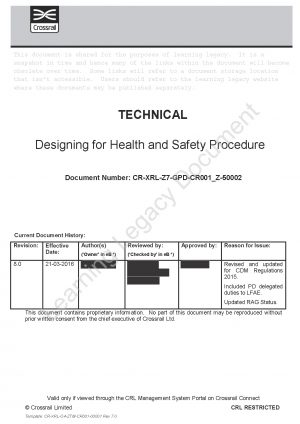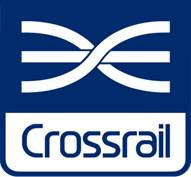This procedure sets out the mechanism by which Crossrail undertakes its design responsibilities as Principal Designer duty holder under the CDM 2015 Regulations and the requirements for Designers working for Crossrail in various parts of its supply chain.
Its purpose is to ensure comprehensive design risk management procedures are adopted across the entire programme and to ensure that so far as is reasonably practicable the project design complies with the requirements of all relevant health and safety legislation and to:
- Focus on all H&S risks affecting the project design, its constructability, future maintenance and end users which must be effectively managed
- Undertake and document comprehensive Risk Assessments through the production of project and project wide Risk Registers
- Ensure the correct identification of all reasonably foreseeable hazards and risks during the design process, and in compliance with CDM 2015, to consider construction, maintenance, cleaning, de-construction and/or demolition and to ensure that these are correctly understood and managed
- Ensure the integration of H&S into the design process and to ensure that risks arising from this are either eliminated or managed to an ALARP condition
- Ensure the organisation of H&S information and ensure that this is communicated to those who need to receive it.
The document describes the general design methodology prescribed by Crossrail to deliver best practice in design risk management to ensure appropriate integration of Health & Safety into the design process.
It is designed to ensure, so far as is reasonably practicable, the robust application of the CDM Regulations to all design work undertaken in order to correctly manage hazards and risks, and to apply appropriate control measures where these hazards and risks cannot be eliminated.
[Reference should also be made to the Construction (Design and Management) (CDM) Procedure, which sets out how the wider Crossrail duties under CDM are discharged.]


